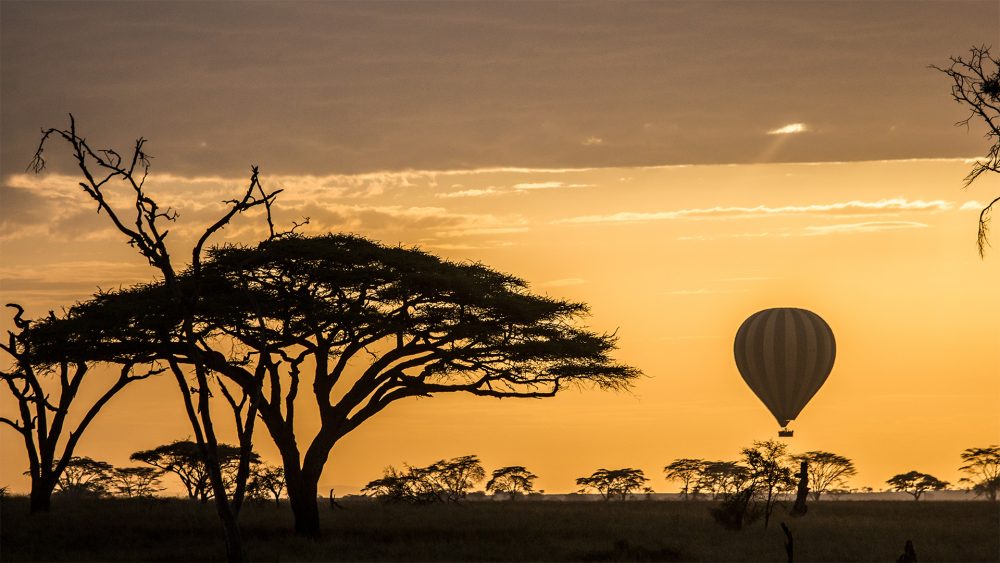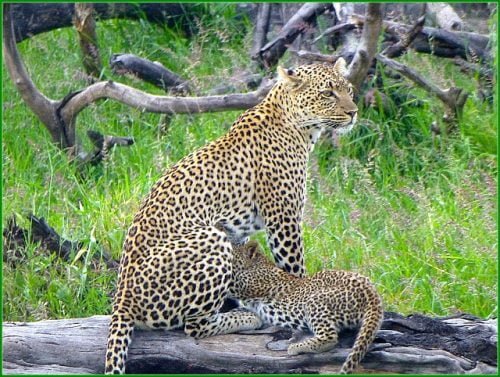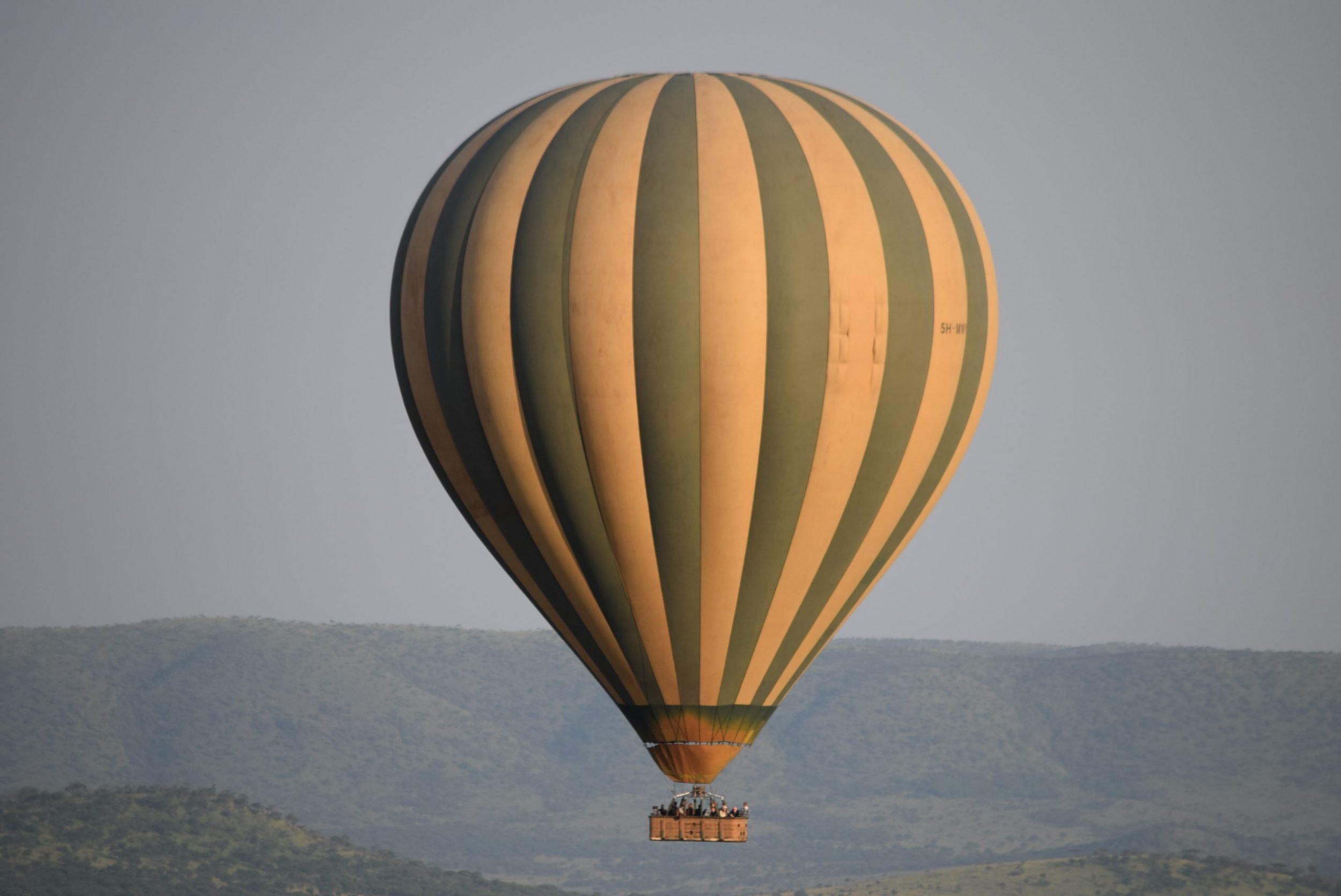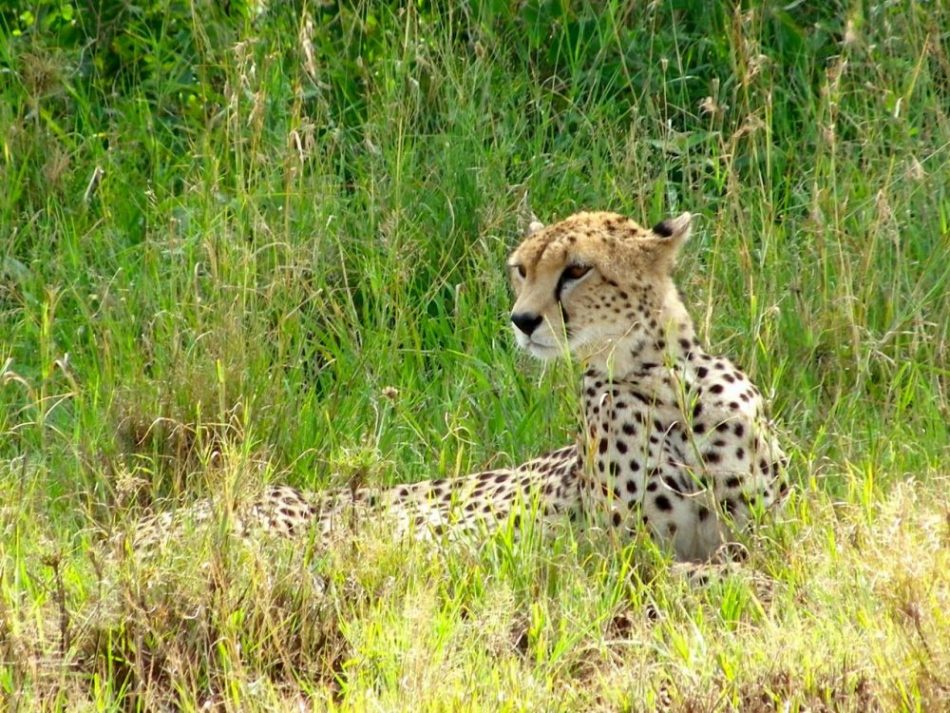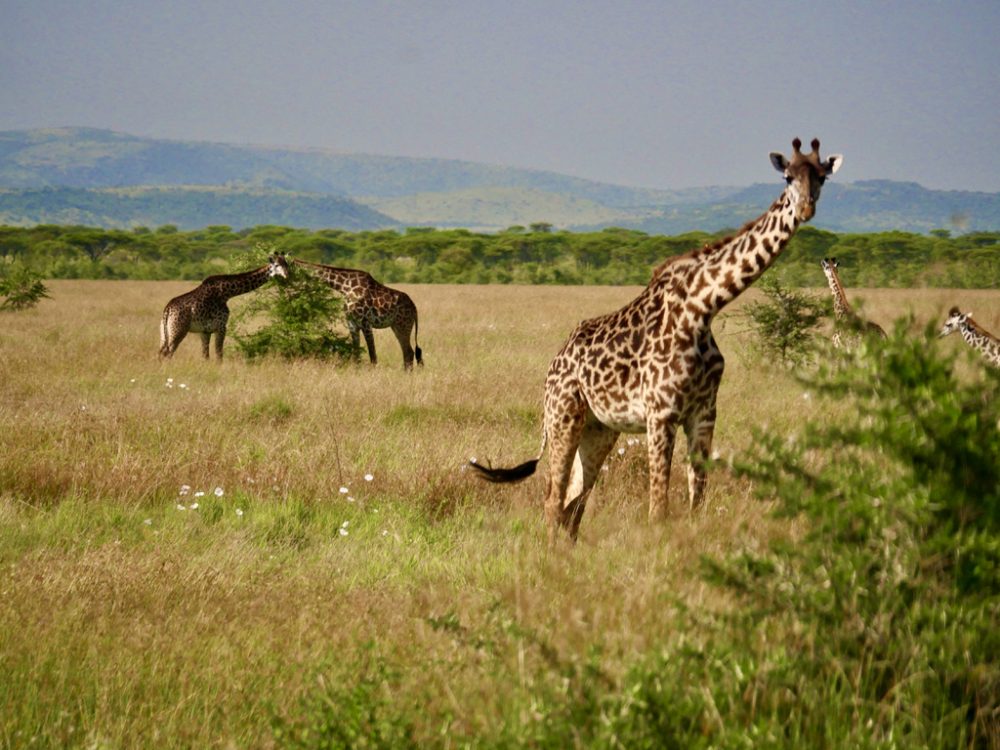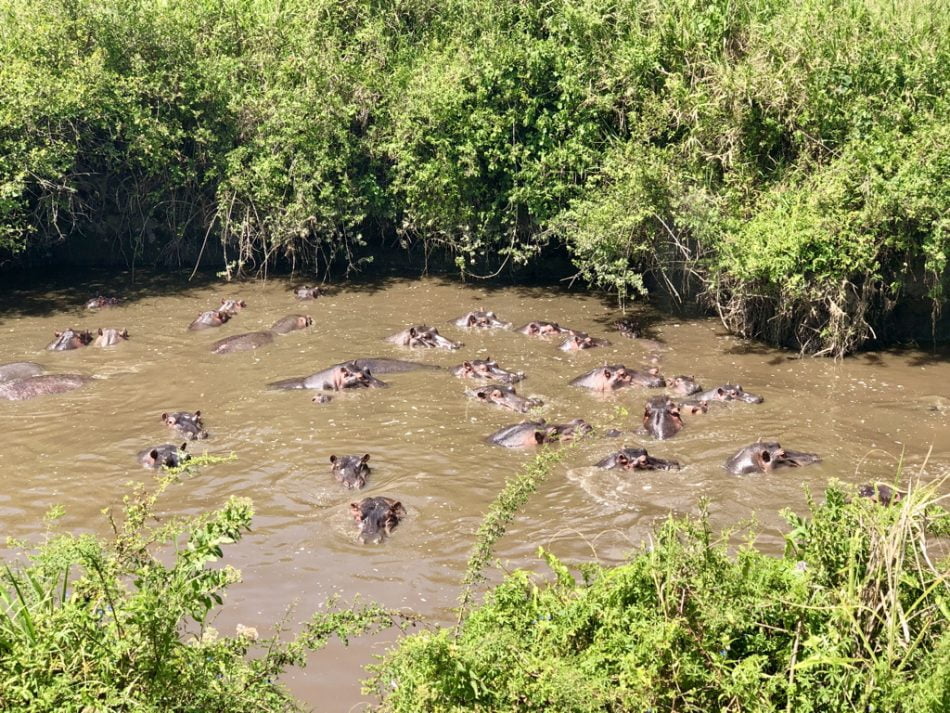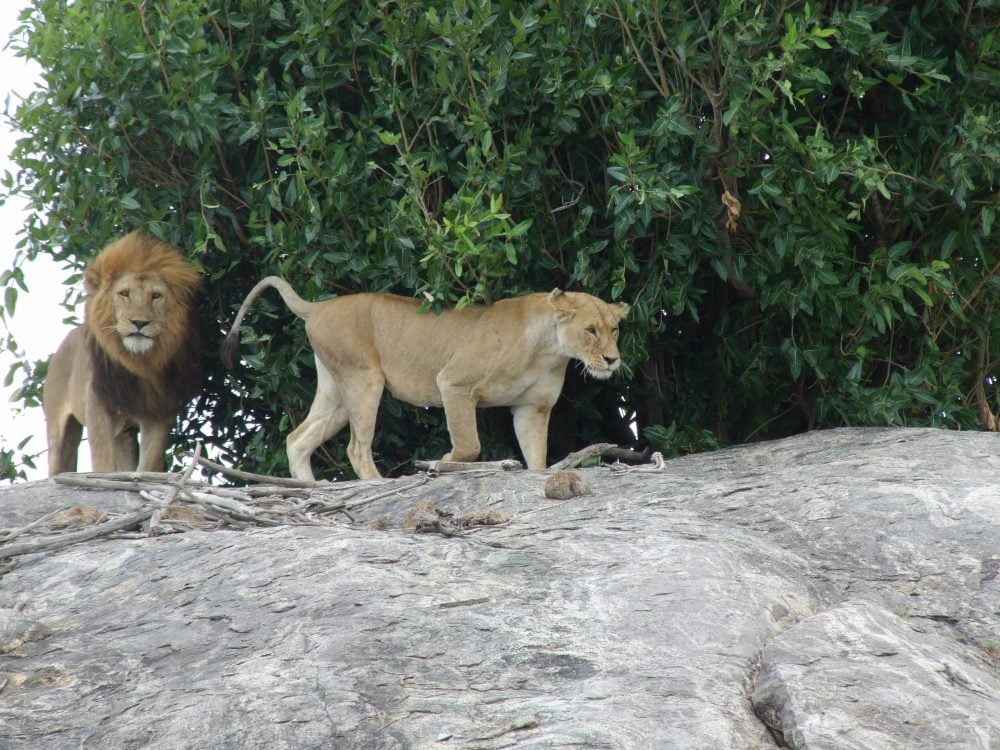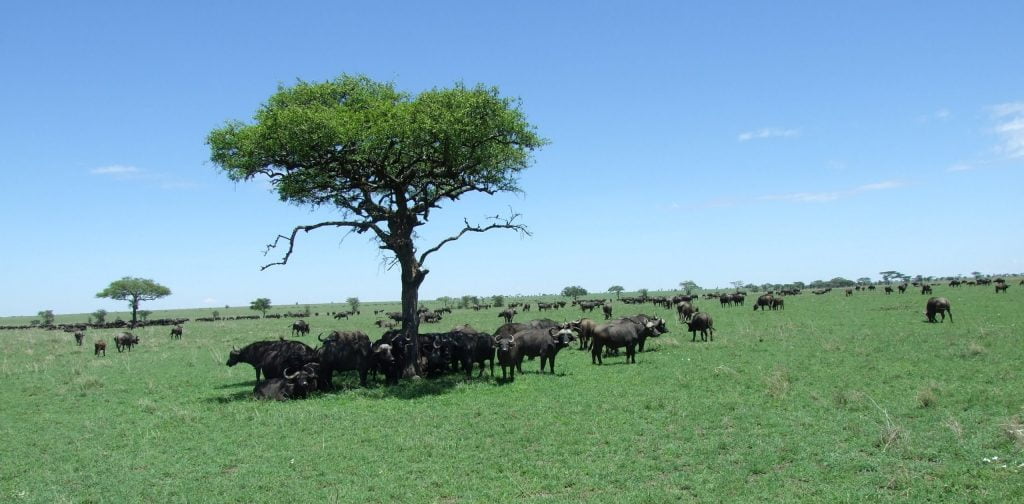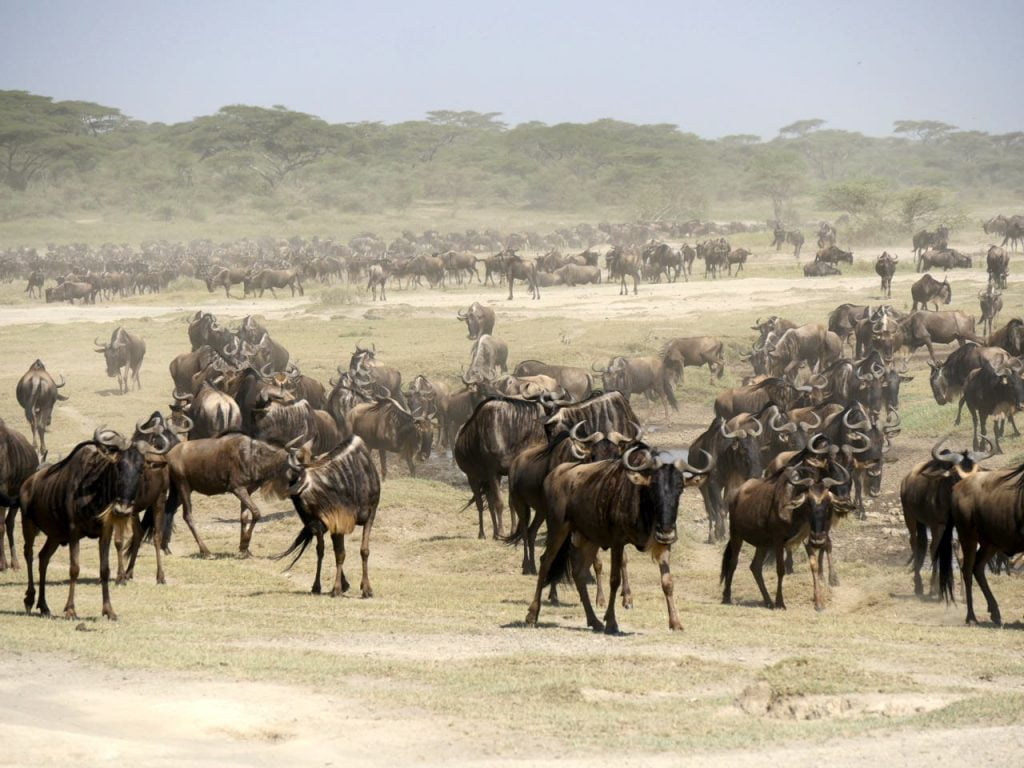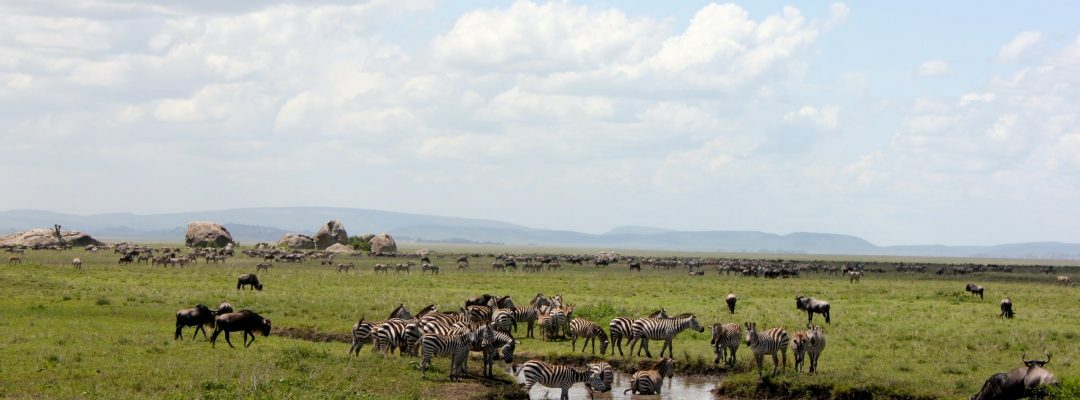
Serengeti National Park, Tanzania’s number 1 attraction
The Serengeti is Tanzania’s largest national park, covering 14,763 km² of grassy plains, wooded savannahs, wooded hills and forests. It is an endless vastness, hence its name: Serengeti, taken from the word “Siringit” meaning “endless plain” in the Masai language.
Park ecosystems
The park’s emblematic plains are found in the south of the Serengeti. Grass covers the region in abundance, attracting huge herds of herbivores. There are also numerous granite rocks known as ‘kopjes’, on which lions can easily be seen napping or observing the surrounding plains.
The centre of the Serengeti is marked by the Seronera valley, home to a rich variety of wildlife attracted by its permanent river. This area is renowned for its high concentration of wild animals.
The west of the park, known as the western corridor, is a transit area for the great migration. Thousands of herbivores cross the Grumeti River on their way to the Masai Mara in May and June. If you’re lucky, you might even catch a glimpse of the crocodiles on the hunt!
The east of the Serengeti, or the Namiri region, promises an incomparable immersion in the national park. It is characterised by vast plains similar to those in the south, kopjes and small clumps of trees. It’s the ideal place for an exclusive safari, away from the tourists.
Finally, the north of the Serengeti adjoins the famous Masai Mara (Kenya). It is also a strategic point from which to observe the great migration as it approaches the Mara River. The Mara River region is characterised by plains, wooded hills and a large resident fauna. In fact, this is the point at which the herds of herbivores separate. Some continue on to the plains of the Masai Mara, while others remain in the northern Serengeti between July and October.
In the north-east of the park is the Lobo Valley, made up of rocky escarpments and forests. It is populated mainly by buffalo and elephants and sees the great migration pass through on its return from Kenya in October.
Discover our safari programme with a Zanzibar extension!
When to go on safari in the Serengeti?
The Serengeti National Park has a short rainy season in November and another from March to May. These remain relatively acceptable, as do the temperatures. That’s why we advise you to choose your travel dates according to what you want to see, rather than the weather.
The Serengeti is the world’s most famous game reserve. And with good reason, it is home to a highly diverse and abundant wildlife all year round. There are over 4 million animals, including more than 400 species of bird. There are also the Big Five: lion, leopard, buffalo, elephant, rhinoceros and also hyenas, birds of prey, cheetahs, etc
The park is best known for the great migration of herbivores, which includes more than 1,600,000 wildebeest, 250,000 zebra and numerous gazelles. Each part of the park has its own special season for observing this natural spectacle. We tell you all about it here!
January, February, March: The herd gathers in the Ngorongoro conservation area (southern Serengeti). This is the period when tens of thousands of baby wildebeest are born, mainly in the Ndutu region.
October, November, December: The migration moves back down to the plains of the southern Serengeti so that the females can give birth safely.
April, May: The herd begins its long trek northwards to find pasture, passing through the Western Corridor, or the Grumeti River region. It’s here that large crocodiles wait impatiently for the arrival of the gigantic herd, and you’ll be waiting just as impatiently for the start of an impressive spectacle.
June, July: The herd approaches the Mara River, where it scatters.
August, September: During these two months, the bulk of the herd is in Kenya’s Masai Mara.
Why go on safari in the Serengeti?
The Serengeti is well worth a visit if you’re travelling to Tanzania. Here are our 5 reasons for visiting the Serengeti National Park:
- have a good chance of spotting the Big Five
- have a high probability of seeing hunting scenes
- witness the great wildebeest migration
- be able to do a bit of off-roading to get closer to the animals
- be alone in the wilderness
The park’s flagship activity: a hot-air balloon flight!
The Serengeti is an incredible park to see from the ground, but not only that..
Why not take to the skies to observe the plains as far as the eye can see, in silence and tranquillity. You’ll set off at sunrise and fly over the migration of millions of wildebeest under the magnificent colours of dawn. Believe us, this is an experience not to be missed after a 4×4 safari. Three words come to mind to describe it: fabulous, unforgettable, extraordinary.
So do like Timon in The Lion King and go “beyond what [you see]” with Off Road!
